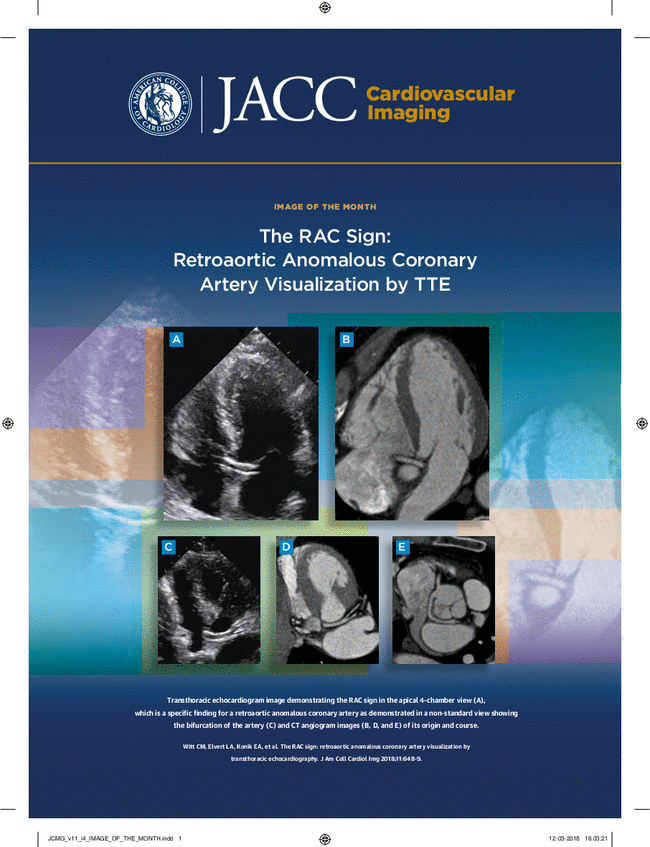Interaction Between Statin Use, Coronary Artery Disease Phenotypes, on Computed Tomography Angiography, and Cardiovascular Outcomes
IF 15.2
1区 医学
Q1 CARDIAC & CARDIOVASCULAR SYSTEMS
引用次数: 0
Abstract
Background
Although statins are recommended for decreasing cardiovascular risk, their efficacy across different patient phenotypes stratified by coronary artery disease (CAD) remains unclear.
Objectives
This study aims to evaluate whether statins decrease major adverse cardiac events (MACE) among CAD phenotypes according to severity, vulnerability and extent categorized by coronary computed tomography angiography (CTA).
Methods
The authors analyzed consecutive patients who were referred for coronary CTA at a tertiary center for the assessment of chronic coronary syndrome. The primary endpoint was MACE defined as a composite of all-cause mortality, acute myocardial infarction, or revascularization for unstable angina. Statin use was defined as annualized days on statin therapy (days on statin based on redeemed prescriptions, divided by follow-up time), and analyzed for each 10% increase in statin use over the follow-up period. Interaction analysis, adjusting for risk factors was applied to define treatment benefit across CAD phenotypes.
Results
Overall, 11,026 individuals (mean age: 58.6 ± 11.9 years, 54.7% male) were analyzed who underwent coronary CTA between January 1, 2013, and December 31, 2020. A 10% increase in statin use was associated with lower risk for MACE the stratified Cox-regression model in patients with CAD (adjusted HR [aHR]: 0.95 [95% CI: 0.92-0.99]; P = 0.006), but not in patients without CAD (aHR: 0.95 [95% CI: 0.84-1.07]; P = 0.370). In the total population using interaction analysis including CAD phenotypes, a 10% increase in statin use decreased the risk for MACE in the presence of obstructive CAD (aHR: 0.91 [95% CI: 0.85-0.97]; P = 0.006), high-risk plaque (aHR: 0.82 [95% CI: 0.68-0.98]; P = 0.026), calcium score of ≥400 (aHR: 0.93 [95% CI: 0.87-0.99]; P = 0.024), and segment involvement score of >4 (aHR: 0.89 [95% CI: 0.84-0.95]; P < 0.001), but not for any CAD (aHR: 0.95 [95% CI: 0.85-1.07]; P = 0.411).
Conclusions
Statin efficacy to decrease MACE depends on CAD phenotypes and increases with the extent and severity of disease and in the presence of high-risk plaques. Patients without CAD have no benefit from statin therapy regarding MACE. Coronary CTA may play a pivotal role in optimizing statin allocation for personalized treatment decisions to prevent MACE.
他汀类药物使用、冠状动脉疾病表型、计算机断层血管造影和心血管结局之间的相互作用
背景:尽管他汀类药物被推荐用于降低心血管风险,但其在冠状动脉疾病(CAD)分层的不同患者表型中的疗效尚不清楚。目的:本研究旨在根据冠状动脉计算机断层血管造影(CTA)分类的严重程度、易损性和程度,评估他汀类药物是否能降低CAD表型中的主要不良心脏事件(MACE)。方法:作者分析了在三级中心进行冠脉CTA评估慢性冠脉综合征的连续患者。主要终点是MACE,定义为全因死亡率、急性心肌梗死或不稳定心绞痛血运重建术的综合指标。他汀类药物的使用被定义为他汀类药物治疗的年化天数(基于处方的他汀类药物使用天数,除以随访时间),并在随访期间对他汀类药物使用每增加10%进行分析。应用相互作用分析,调整危险因素来确定CAD表型的治疗效果。结果:总体而言,在2013年1月1日至2020年12月31日期间接受冠状动脉CTA治疗的11026例患者(平均年龄:58.6±11.9岁,54.7%为男性)进行了分析。在分层cox -回归模型中,他汀类药物使用量增加10%与冠心病患者发生MACE的风险降低相关(校正HR [aHR]: 0.95 [95% CI: 0.92-0.99];P = 0.006),但没有CAD的患者没有(aHR: 0.95 [95% CI: 0.84-1.07];P = 0.370)。在使用包括CAD表型在内的相互作用分析的总体人群中,他汀类药物使用量增加10%可降低阻塞性CAD患者发生MACE的风险(aHR: 0.91 [95% CI: 0.85-0.97];P = 0.006)、高危斑块(aHR: 0.82 [95% CI: 0.68-0.98];P = 0.026),钙评分≥400 (aHR: 0.93 [95% CI: 0.87-0.99];P = 0.024),节段受累评分bbbb4 (aHR: 0.89 [95% CI: 0.84-0.95];P < 0.001),但没有任何CAD (aHR: 0.95 [95% CI: 0.85-1.07];P = 0.411)。结论:他汀类药物降低MACE的疗效取决于CAD表型,并随着疾病的程度和严重程度以及存在高危斑块而增加。没有CAD的患者没有从他汀类药物治疗中获益。冠状动脉CTA可能在优化他汀类药物分配以预防MACE的个性化治疗决策中发挥关键作用。
本文章由计算机程序翻译,如有差异,请以英文原文为准。
求助全文
约1分钟内获得全文
求助全文
来源期刊

JACC. Cardiovascular imaging
CARDIAC & CARDIOVASCULAR SYSTEMS-RADIOLOGY, NUCLEAR MEDICINE & MEDICAL IMAGING
CiteScore
24.90
自引率
5.70%
发文量
330
审稿时长
4-8 weeks
期刊介绍:
JACC: Cardiovascular Imaging, part of the prestigious Journal of the American College of Cardiology (JACC) family, offers readers a comprehensive perspective on all aspects of cardiovascular imaging. This specialist journal covers original clinical research on both non-invasive and invasive imaging techniques, including echocardiography, CT, CMR, nuclear, optical imaging, and cine-angiography.
JACC. Cardiovascular imaging highlights advances in basic science and molecular imaging that are expected to significantly impact clinical practice in the next decade. This influence encompasses improvements in diagnostic performance, enhanced understanding of the pathogenetic basis of diseases, and advancements in therapy.
In addition to cutting-edge research,the content of JACC: Cardiovascular Imaging emphasizes practical aspects for the practicing cardiologist, including advocacy and practice management.The journal also features state-of-the-art reviews, ensuring a well-rounded and insightful resource for professionals in the field of cardiovascular imaging.
 求助内容:
求助内容: 应助结果提醒方式:
应助结果提醒方式:


